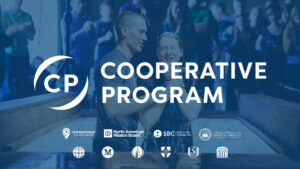By Michael M. Lee
Correspondent

The Scheme
News media outlets reported recently that a group of thieves victimized hundreds of churches across the country in a simple yet effective scheme.
These bad actors visited church locations – sometimes up to 85 per day – on days when there were no worship services. They simply removed all mail from the church’s mailbox with the goal of accessing donations.
The suspects used aliases to deposit stolen checks into different bank accounts. Then, using ATMs, the suspects withdrew the funds as soon as deposits were posted but before the bank identified any discrepancies. It is reported that 1,700 checks were stolen totaling more than $760,000 from 636 churches across the country. Three hundred and fifty-five of the churches were in Florida.
What circumstances allowed this to happen?
During the height of the pandemic, many offices were sparsely staffed and many churches switched from in-person services to online services. Therefore, much of the giving to churches (especially those without robust online giving options) naturally shifted from physical collection to mailed-in donations.
This reality, coupled with safety measures intended to reduce face-to-face contact, made it less likely that some churches would retrieve mail in a timely manner and more likely that checks (and possibly currency) would accumulate in mailboxes.
Internal Control Considerations
This unfortunate series of events, which reportedly extended over more than a year, serves as a reminder that organizations should take appropriate steps to protect donations received via the mail – in normal times and during emergencies. For example, in addition to retrieving mail in a timely manner, organizations may wish to consider:
— Utilizing anti-theft mailboxes.
— Placing mailboxes in plain view under the surveillance of a motion-detecting camera.
— Using a post office box instead of a traditional mailbox.
— Picking up mail at the post office instead of having it delivered to the office.
— Using the lockbox services of a local bank to receive and process checks
Nonprofit leaders should consider each of the practices described above in conjunction with appropriate dual controls and other checks and balances (e.g., rotation of the people picking up the mail, regularly sending donor giving statements, and requiring two unrelated people working together to access unprocessed mail).
Organizations that have not yet implemented a robust and easy-to-use electronic giving function (such as the use of a giving application, text-to-give, or other similar tools) should consider doing so, as the use of such giving methods reduces the risks associated with receiving checks and cash and typically strengthens overall internal controls.
Lee, a certified public accountant, is a partner and national director of audit and assurance services for Batts, Morrison, Wells and Lee Certified Public Accountants, which specializes in non-profit organizations. He is a regular contributor to the firms’ newsletter, Nonprofit Special AlertSM, from which this article is drawn.








